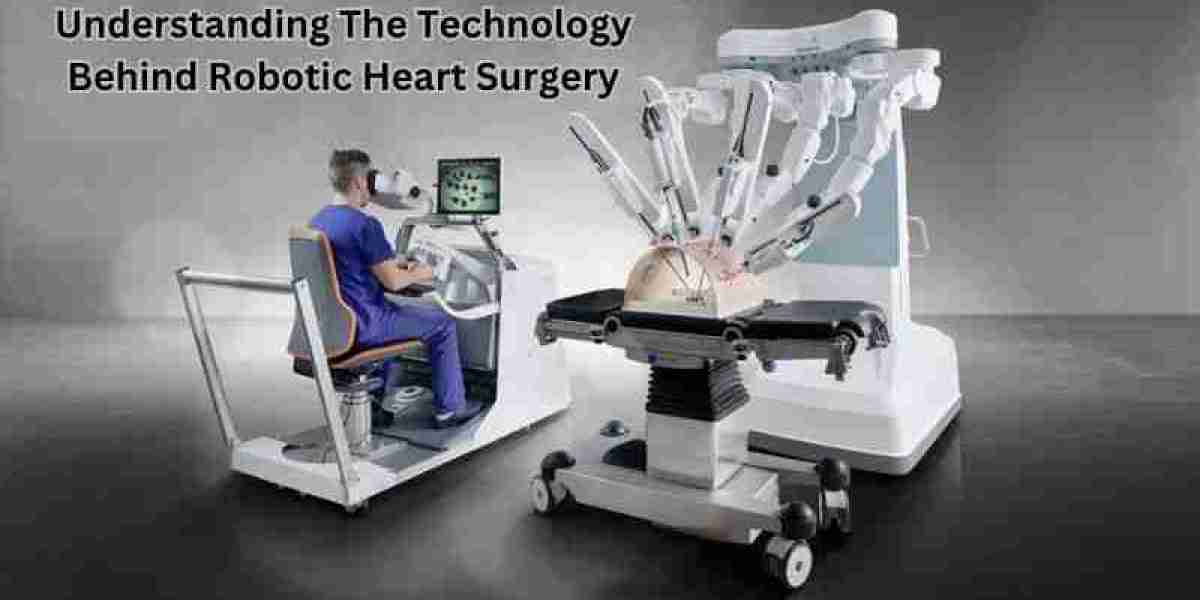Robotic heart surgery has emerged as a groundbreaking advancement in the field of cardiac medicine. Over the past decade, technological developments have revolutionized heart surgery, allowing for minimally invasive procedures with better outcomes. One of the most remarkable applications of this technology is robotic heart bypass surgery, which has significantly improved the lives of countless patients suffering from coronary artery disease. In this blog, we will explore the technology behind robotic heart surgery, its advantages, and why robotic heart bypass surgery in India is gaining global recognition.
What is Robotic Heart Surgery?
Robotic heart surgery refers to a type of surgery where robots are used to assist surgeons in performing heart operations. These robotic systems do not replace human surgeons but act as advanced tools that enhance the surgeon’s ability to perform delicate procedures with precision, flexibility, and minimal invasiveness. The system provides real-time 3D visualization and allows surgeons to control robotic arms through a console, making it possible to perform complex surgeries with minimal disruption to the body.
One of the most commonly performed procedures using this robotic technology is robotic heart bypass surgery. This surgery is primarily used to treat patients with coronary artery disease, where the heart's arteries become blocked or narrowed, restricting blood flow. Robotic heart bypass surgery offers a more precise and less invasive alternative to traditional open-heart surgery.
How Does Robotic Heart Surgery Work?
The process begins with the surgeon making small incisions in the chest, typically about the size of a buttonhole. This is far less invasive than the large incision required in traditional heart surgery. A robotic system, like the da Vinci Surgical System, is then used, which consists of multiple robotic arms controlled by the surgeon from a console.
Each robotic arm is equipped with instruments that allow the surgeon to perform intricate movements with a high level of precision. One arm may carry a tiny camera that provides high-definition, 3D images of the heart, while others hold the surgical instruments. The surgeon controls the robotic arms with hand and foot pedals, giving them the ability to manipulate the instruments with incredible dexterity.
The real-time 3D visualization enables surgeons to view the heart in much greater detail, making it easier to identify blockages and plan the bypass procedure. The surgeon’s movements are translated into precise movements by the robotic system, allowing them to make accurate, controlled incisions and attach grafts to the coronary arteries.
Key Benefits of Robotic Heart Surgery
The development of robotic heart bypass surgery has brought about a number of significant benefits for both patients and healthcare professionals. Let’s take a look at some of the most important advantages:
Minimally Invasive: The most notable benefit is that robotic heart bypass surgery is minimally invasive. The small incisions used during the procedure significantly reduce trauma to the chest, resulting in less pain, reduced scarring, and faster recovery times compared to traditional open-heart surgery.
Enhanced Precision: Robotic systems offer highly refined movements, which improves the surgeon's precision. The robotic arms can perform intricate tasks, such as suturing tiny blood vessels, with far greater accuracy than human hands alone.
Shorter Hospital Stay and Faster Recovery: Due to the minimally invasive nature of the procedure, patients typically experience shorter hospital stays and faster recovery times. Most patients are able to return to their daily activities much sooner than with traditional surgery.
Reduced Risk of Infection: The smaller incisions used in robotic heart surgery reduce the risk of infection. Additionally, there is a lower risk of complications such as bleeding, blood clots, and cardiac arrhythmias.
Less Pain: Traditional open-heart surgery often involves cutting through the breastbone, causing significant pain and discomfort post-surgery. Robotic procedures, on the other hand, result in less postoperative pain due to the small incisions and less disruption to the body’s tissues.
Why Choose Robotic Heart Bypass Surgery in India?
India has become a leading destination for advanced medical procedures, including robotic heart bypass surgery. There are several factors that contribute to India's growing prominence in the field of robotic heart surgery:
Affordable Healthcare: One of the biggest reasons people seek robotic heart bypass surgery in India is the affordability of medical care. While heart surgery can be prohibitively expensive in countries like the United States or the United Kingdom, India offers world-class medical services at a fraction of the cost. Patients can access state-of-the-art robotic surgery procedures at a fraction of the price they would pay in Western countries.
Experienced Surgeons: India is home to a large pool of highly trained and experienced cardiac surgeons. Many of them have trained in prestigious international medical institutions and have performed numerous successful robotic heart surgeries. The experience and expertise of these surgeons have earned India a reputation for excellence in heart surgery.
Top-Notch Medical Facilities: Indian hospitals are equipped with the latest medical technologies, including robotic surgical systems. Many hospitals in India are internationally accredited and adhere to the highest standards of care. Patients can expect to receive the same high level of treatment as they would in top-tier hospitals abroad.
Medical Tourism: India has become a hub for medical tourism, with patients traveling from across the globe to undergo procedures such as robotic heart bypass surgery. The country offers a blend of cutting-edge medical technology, expert care, and affordable treatment options, making it an attractive destination for those seeking advanced heart surgery.
Future of Robotic Heart Surgery
The field of robotic heart surgery is constantly evolving, with new advancements being made every year. In the future, we can expect further improvements in robotic systems, making them even more precise, efficient, and accessible. The development of artificial intelligence (AI) and machine learning will likely play a crucial role in enhancing the capabilities of robotic systems, potentially allowing them to perform some tasks autonomously or assist surgeons with decision-making in real time.
Conclusion
Robotic heart surgery, especially robotic heart bypass surgery, has revolutionized the treatment of coronary artery disease. With its many benefits, including precision, faster recovery, and reduced risk of complications, it has become a preferred choice for many patients. Additionally, robotic heart bypass surgery in India provides patients from around the world an opportunity to receive world-class treatment at an affordable cost. As the technology continues to improve, robotic heart surgery will undoubtedly play an even greater role in shaping the future of cardiac care, offering patients better outcomes and a higher quality of life.
for more(click here)






